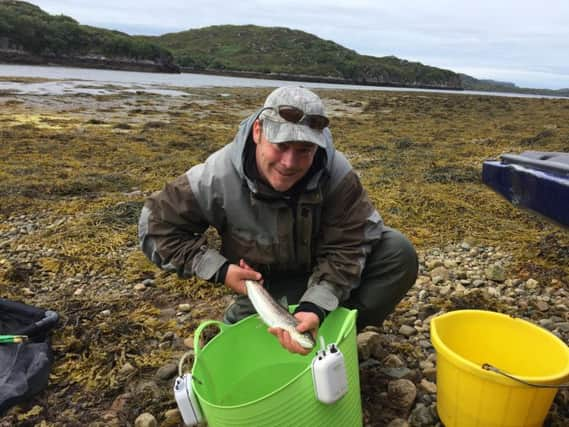Scientists eavesdrop on disappearing sea trout


Wild fishing brings in around £80 million to the Scottish economy and generates much-needed income in rural areas. The sea trout, with its muscular speckled silver physique, is highly prized among sport anglers for the challenge it offers them. But populations have been declining over the past half century, despite the imposition of an almost universal catch-and-release policy across the country.
Rod catch records suggest stocks have crashed by more than 40 per cent in the past 20 years.
Advertisement
Hide AdAdvertisement
Hide AdNow scientists with the West Sutherland Fisheries Trust (WSFT) hope results from a new study can help them reverse the fortunes of the species.
They have positioned a total of 40 acoustic receivers at various locations around Loch Laxford, near Scourie, on the far north-west coast.
Meanwhile, 99 young and adult sea trout have been fitted with special tags that will communicate with the receivers to record their whereabouts and activities.
The project is the brainchild of Adam Beynon-Jones, assistant biologist at the trust.
“There is likely a huge array of factors affecting sea trout but we need understand more about their behaviour,” he said. “This sea loch is their habitat so we want to discover which parts of it are important to them and why, so we can think about putting better protection measures in certain areas.
“The more you know about any wild animal and what it needs to survive, the better chance you have of getting good conservation measures in place to try to help them.”
Experts believe a combination of factors are behind the declines, including climate change, degradation of habitat, barriers to migration, a reduction in food supplies and a rise in predators. The increase in fish-farming, which began in Scotland in the 1970s is also believed to be a factor – caged salmon have unnaturally high levels of parasitic sea lice, which spread to wild fish and cause harm or even death.
The £163,000 project is being carried out in collaboration with academics at the University of Glasgow’s Scottish Centre for Ecology and the Natural Environment, the Atlantic Salmon Trust and government agency Marine Scotland, with support from Loch Duart salmon farms and local estates and businesses.
Advertisement
Hide AdAdvertisement
Hide AdEnvironment secretary Roseanna Cunningham said: “Sea trout are very important to Scotland’s biodiversity, but very little is known about their movements, habitat use or feeding behaviour during their time at sea. Developing that knowledge is essential to understanding the pressures that sea trout face, so we can try to arrest the causes of the decline in numbers.
WSFT has received much of its support through donations of time, equipment and services, plus a crowd-funding appeal. For more information visit www.wsft.org.uk.